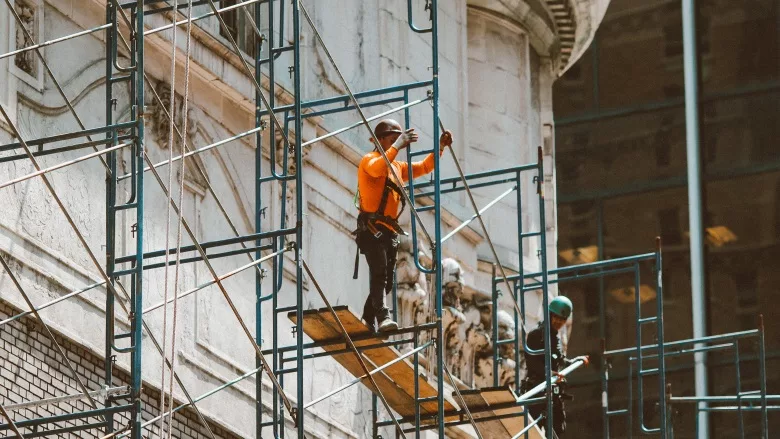OSHA releases guidelines to prevent workplace falls

Image via Unsplash
The Occupational Health and Safety Administration (OSHA) is implementing a national program to prevent falls. Workplace falls are the leading cause of fatal workplace injuries and are the most cited construction violation.
The program will focus on reducing fall-related injuries and fatalities for people working at heights in all industries. The targeted enforcement program is based on historical Bureau of Labor Statistics data and OSHA enforcement history. BLS data shows that of the 5,190 fatal workplace injuries in 2021, 680 were associated with falls from elevations, about 13% of all deaths.
The program establishes guidance for locating and inspecting fall hazards and allows OSHA compliance safety and health officers to open inspections whenever they observe someone working at heights. An outreach component of the program will focus on educating employers about effective ways to keep their workers safe. If a compliance officer determines an inspection is not necessary after entering a worksite and observing work activities, they will provide outreach on fall protection and leave the site.
Security measures to prevent fall risks should include:
- Guard every floor hole into which a worker can accidentally walk (using a railing and toe-board or a floor hole cover).
- Provide a guard rail and toe-board around every elevated open sided platform, floor or runway.
- Regardless of height, if a worker can fall into or onto dangerous machines or equipment (such as a vat of acid or a conveyor belt) employers must provide guardrails and toe-boards to prevent workers from falling and getting injured.
- Other means of fall protection that may be required on certain jobs include safety harness and line, safety nets, stair railings and hand rails.
In addition, OSHA tells employers to follow other recommendations:
- Provide working conditions that are free of known dangers.
- Keep floors in work areas in a clean and, so far as possible, a dry condition.
- Select and provide required personal protective equipment at no cost to workers.
- Train workers about job hazards in a language that they can understand.
Looking for a reprint of this article?
From high-res PDFs to custom plaques, order your copy today!






